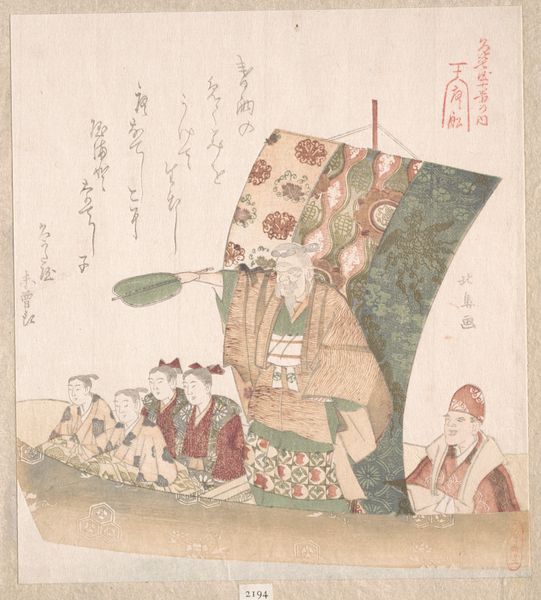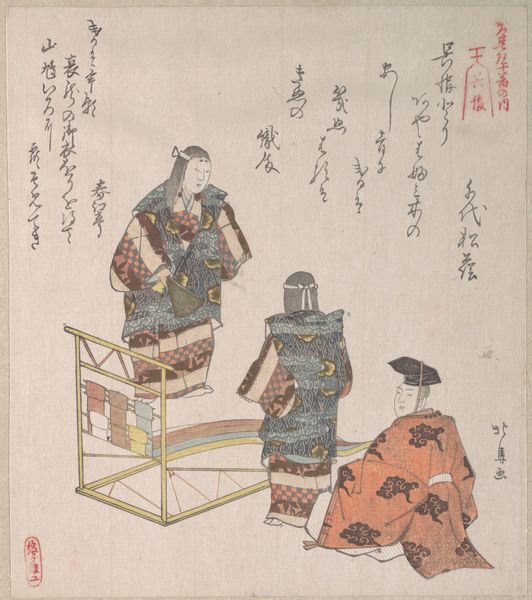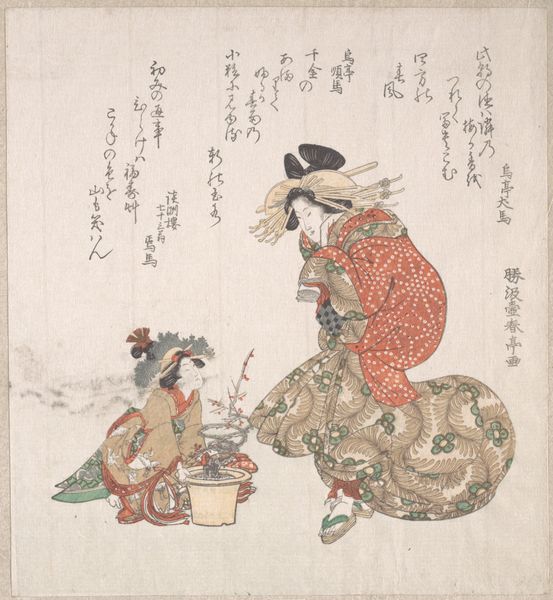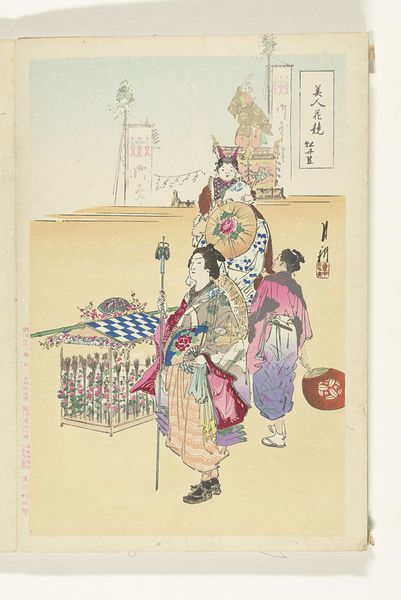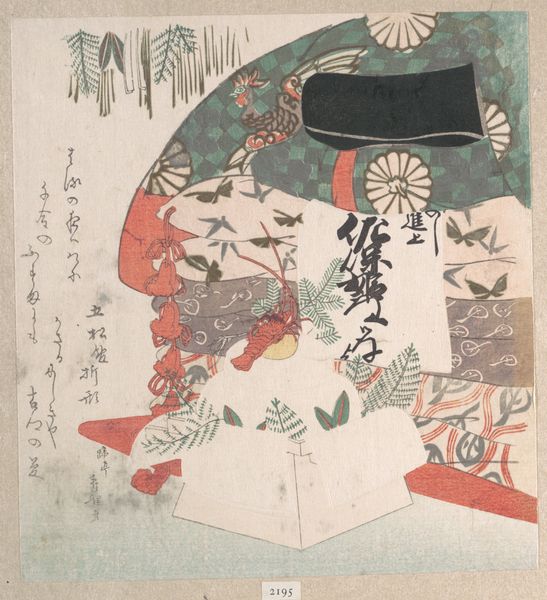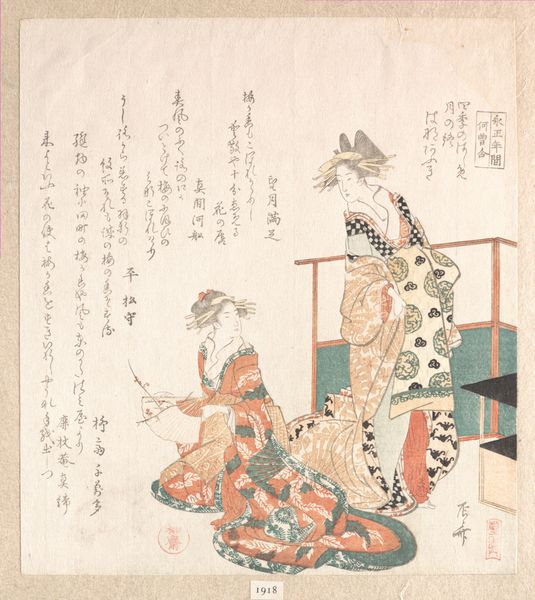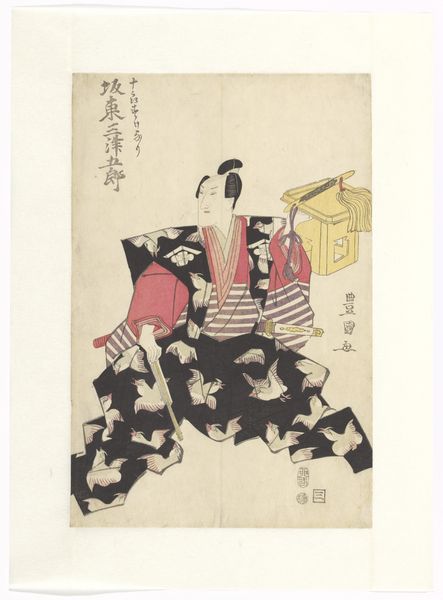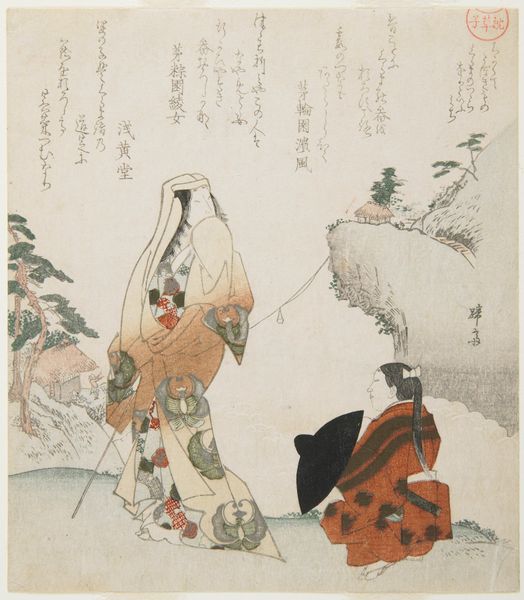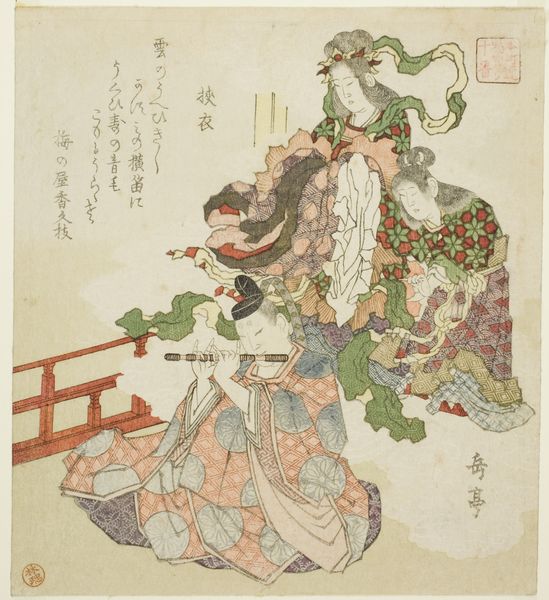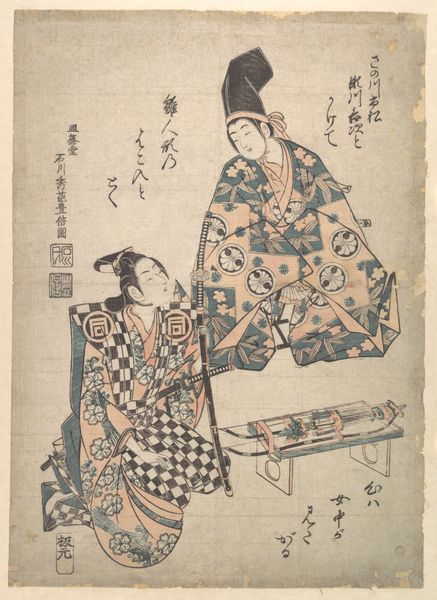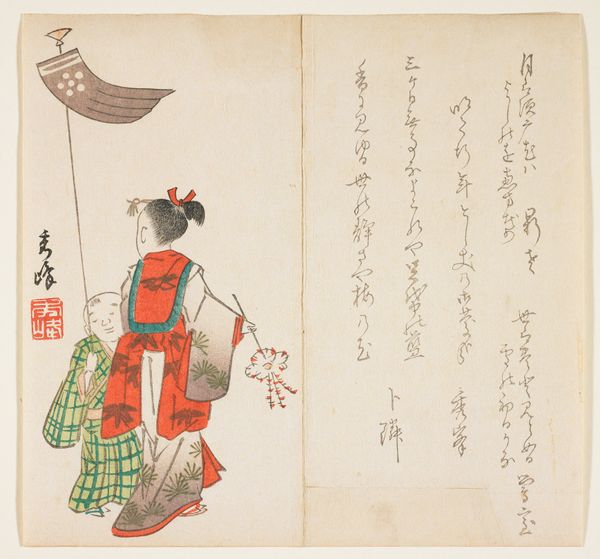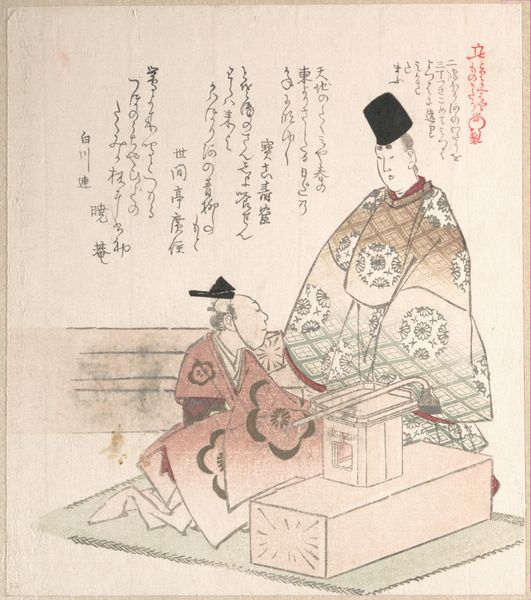
print, ink, woodblock-print
#
portrait
# print
#
asian-art
#
ukiyo-e
#
japan
#
figuration
#
ink
#
woodblock-print
#
japanese
#
genre-painting
Dimensions: 8 1/8 x 7 3/8 in. (20.6 x 18.7 cm) (image, sheet)
Copyright: Public Domain
Totoya Hokkei's "Umegae (Plum Branch)," made in Japan in the 19th century, depicts actors in a scene, dominated by the flowering plum branch—a profound symbol of resilience and renewal, heralding spring's arrival after winter's harshness. The flowering plum is no mere botanical detail; it's a cultural hieroglyph. Across time, the plum's image is passed down in Chinese art, where it represents perseverance and the ability to flourish against adversity. Notice its presence also in a Renaissance painting, where a blooming branch in the background may underscore the virtues of fortitude and hope. The enduring motif evokes powerful emotional states. Hokkei uses this symbolic visual to reach our collective memory, inviting contemplation on the cyclical nature of life. It reminds us that even amidst the darkest winters, the promise of renewal persists, engaging us on a subconscious level.
Comments
minneapolisinstituteofart almost 2 years ago
⋮
The woman (shite) standing is the inn owner turned out be the ghost of the wife of the Noh musician Fuji. The man (waki) is a traveling monk who calmed the ghost down. Umegae is the title of the song sung by the ghost at the ending.
Join the conversation
Join millions of artists and users on Artera today and experience the ultimate creative platform.
